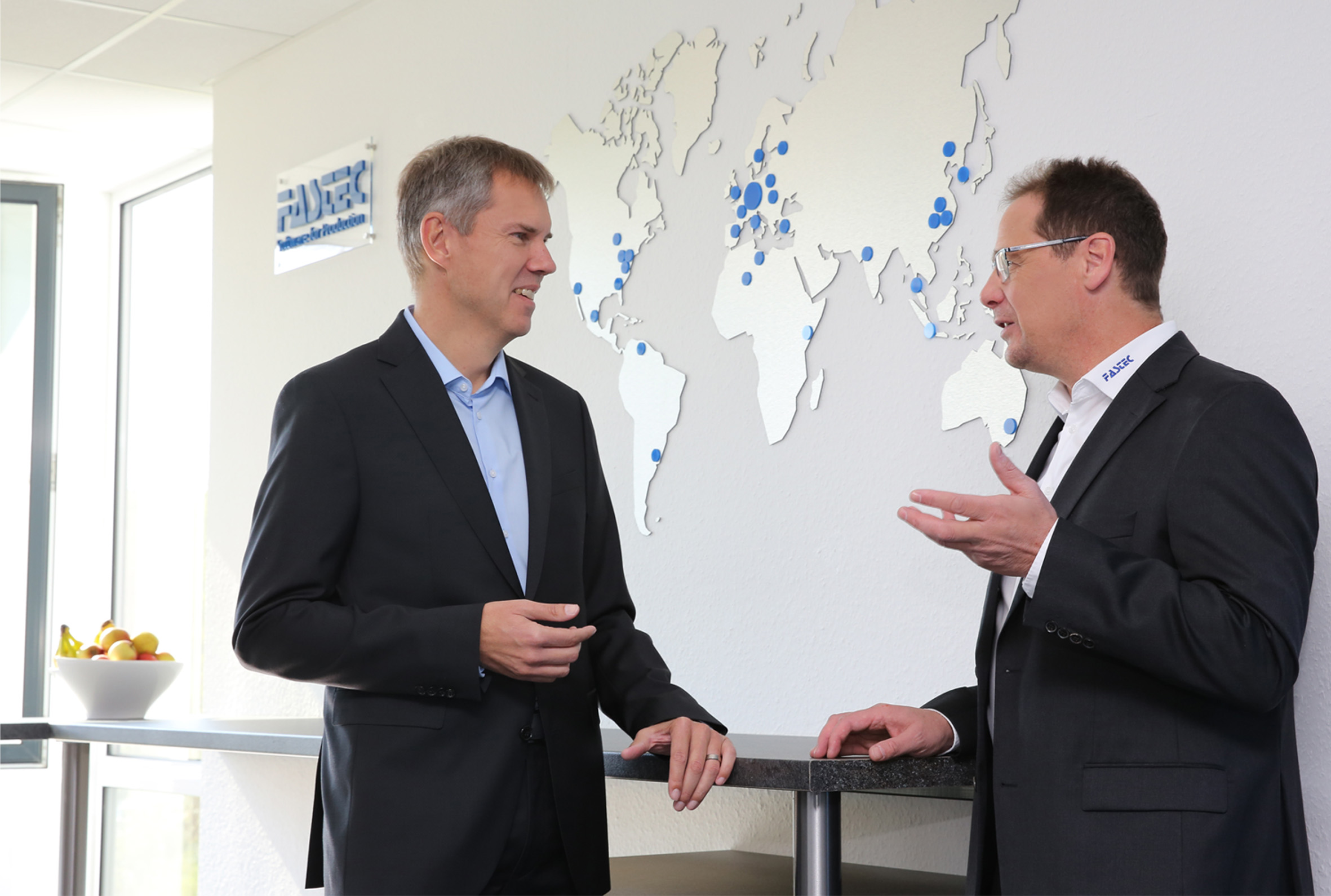Using the example of a medium-sized production company, FASTEC clearly describes how to get started with lean means, how to get employees on board and enthusiastic about MES, how to achieve a comprehensive MES system step by step and which points need to be considered.
The introduction of an MES system is often the first step on the road to Industry 4.0. MES systems can be implemented relatively quickly in manufacturing companies. Nevertheless, many entrepreneurs are primarily concerned along the lines of the great effort and high costs involved and are therefore reluctant to invest, especially in times of economic downturn.
But especially now, in good economic times, it is the entrepreneur’s responsibility to use the time to invest money and secure the economic future of the company with an MES system.
Start OEE
In our example, let’s assume a medium-sized manufacturing company where everything is going well according to gut feeling. However, the new production manager, Mr Müller, has a different opinion after looking at the production processes for some time. He sees clear potential for optimisation and would therefore like to introduce an MES system in the company.
With regard to the recording of machine data (MDA), the current situation is that the production employees write down their entries on downtimes and faults by hand on pre-printed forms. This is either done immediately or just before the end of the working day – as the production process allows. However, the manual logging of downtimes, faults etc. is too imprecise and prone to error with regard to the exact times, the exact duration and the description of the cause for meaningful reports. The production employees then hand the recording sheets to the foreman or shift supervisor, who types the values into tables and forwards them to Controlling. Controlling then uses the data to create OEE calculations, which are made available to operations and production management as well as the executive board. With a great deal of effort and a delay of several days, the company now has OEE reports whose informative value is open to justified doubt.
Production manager Müller quickly recognised the problem. He wants to convince the managing director that with an MES system, this data is available in detail, unadulterated and, above all, in real-time, in order to be able to react immediately to problems and optimise further processes. However, he knows that the mere mention of the term “MES” will result in a blockade for the managing director due to the high investment costs and resources tied up in it. So he develops a strategy. He convinces his boss that manual data acquisition has too many inaccuracies and is too time-consuming for the machine operators. He therefore wants to start a test with an OEE measuring device on a system with low installation effort and low costs. His boss authorised the 2,000 euros he needed for three months’ rental, commissioning and training for the OEE measuring device. The works council was quickly convinced that the OEE device would first and foremost make work easier for the machine operators. Just one week later, the measuring device was installed on the system and the colleagues were instructed. Operation is simple and convenient for the employees. The start and end times for downtimes are specified in real-time by the OEE measuring device. The machine operators only need to tap buttons directly on the touchscreen to select a downtime, such as a material shortage, or to detail a fault. After some initial scepticism, they are delighted that they no longer have to make tedious notes and feel that working with the OEE measuring device makes their work easier. At the same time, the shift or production manager can draw precise conclusions about when the plant was down and for how long, for example if material was not provided on time. The OEE reports are promptly available for detailed reports on optimisation options and Müller has set up an alert on his mobile phone for longer machine downtimes. After the first week of the test run, the analysis of the reasons for downtimes allows specific problem areas on the system to be identified, which can be reduced through targeted technical and organisational optimisation measures. The output of the system increases continuously. After a total of three months of testing, Müller’s ROI calculations convince the managing director that the OEE measuring device has amortised within a very short time.
Think MES
The managing director realises that there is potential for optimisation in the entire production area and gives the go-ahead for the introduction of an MDA/PDA system. A team is put together with colleagues from all affected areas (IT, production, works council, lean, etc.), whose first task is to define the company’s requirements for such a system with an interface to the ERP system. The project team quickly realised that only a modular MES system would be able to cover future requirements and grow accordingly without having to implement complex interfaces for software solutions from different providers later on.
As the MES system could also be used to analyse personal performance in the future, the works council has a right of co-determination. It is therefore imperative that internal agreements are made before the MES is introduced.
The specifications are finalised within a few weeks. After an extensive review of all MES providers, the three favourites are finally invited to presentations. The project participants examine all the pros and cons, costs and functionalities and decide to start a pilot installation with an MES provider. The pilot is initially installed at three plants for a period of three months. The software licences and the required hardware are provided free of charge by the MES provider. The manufacturing companies only incur costs for the services: for the necessary workshop, commissioning the system and training the employees.
Just a few weeks later, the first successes proved production manager Müller right. Even he would never have dreamed of achieving such a significant increase in productivity in such a short space of time. The managing director is now also completely convinced. In close co-operation with the MES provider, the requirements defined in advance during the pilot phase were further adapted to the production situation: Downtime reasons were refined, productive and downtimes defined, terminal views and reports customised, etc. After these first few months, it is clear to everyone involved in the project that the optimised functionality will now be rolled out to a further 20 systems.
Just one year later, the topic of MDA/PDA has penetrated all levels of the company, so that the further expansion towards a fully comprehensive MES system is started: the Maintenance module is implemented and another year later the planning module for the automatic planning of Production orders is licensed. The turnover and order figures prove the company right: not only has productivity increased noticeably, but no employee wants to miss out on the transparency provided by the comprehensive monitoring in production and customers praise the reliably high product quality and adherence to deadlines. So the journey has paid off for everyone.








